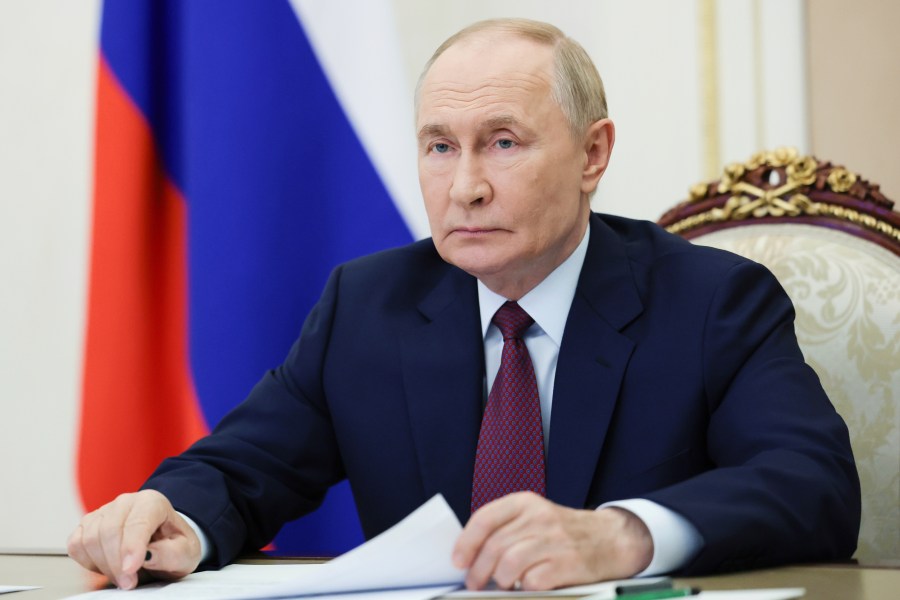Related Video: NATO Taking Russian Drones In Poland As WARNING, Worries Of Wider War Deepen (Posted Sept. 11, 2025)
Three Russian fighter jets flew into Estonian airspace Friday in what the country’s top diplomat called an “unprecedented and brazen intrusion.”
Estonia Prime Minister Kristen Michal later on Friday requested NATO Article 4 consultations. Article 4 allows NATO members to bring any issue threatening that country’s territorial integrity or political independence or security to other NATO members.
“This morning, 3 Russian Mig-31 fighter jets entered Estonian airspace. NATO fighters responded and the Russian planes were forced to flee. Such violation is totally unacceptable. The Government of Estonia has decided to request NATO Article 4 consultations,” Michael wrote in a post on X.
The three Russian MiG-31s flew into Estonian airspace for 12 minutes, Margus Tsahkna, Estonia’s minister of foreign affairs, wrote in a separate post on X.
Tsahkna said the Russian charge d’affaires was summoned over “another violation of Estonia’s airspace.”
“This is an unprecedented and brazen intrusion — clear proof of Russia’s growing aggression,” Tsahkna said.
“Such actions cannot be tolerated and must be met with swift political and economic pressure.”
Russia’s incursion into Estonia follows a high-profile violation of Poland’s airspace last week, which also triggered NATO air defenses. Poland also invoked the alliance’s Article 4 pillar, convening NATO members for consultation over threats to a member.
At least 19 Russian drones crossed over into Polish airspace Sept. 9, amid a major Russian aerial assault against Ukraine. Polish officials said the incursion was “intentional” and pushed back on President Trump saying the Kremlin might have made a mistake.
NATO Secretary-General Mark Rutte last week said Russia’s incursion into Poland was the largest concentration of violations of NATO airspace but “was not an isolated incident.”
“Russia’s recklessness in the air along our eastern flank is increasing in frequency,” he said.
A Russian drone later violated Romania’s airspace.
The Russian incursions into NATO airspace builds on a years-long hybrid warfare against countries in the alliance, defined by acts of sabotage, cyberattacks, destruction of infrastructure and attacks on individuals.
NATO has responded to the violations by launching what it called operation Eastern Sentry. The operation brings together increased military assets from NATO members, deployed along NATO’s eastern flank. NATO said Denmark is contributing two F-16s and an anti-air warfare frigate, France is contributing three Rafales, and Germany is contributing four Eurofighters.
“The violation of Poland’s airspace earlier this week is not an isolated incident and impacts more than just Poland,” U.S. Gen. Alexus Grynkewich, the supreme allied commander Europe, said last week.
“Eastern Sentry and this new approach will deliver even more focused and flexible deterrence and defence where and when needed to protect our people and deter against further reckless and dangerous acts like what occurred earlier this week.”
The Russian airspace violation against Estonia also came as the European Union unveiled a 19th package of sanctions against Moscow on Friday over its war in Ukraine.
The sanctions set a deadline of 2027 to end imports of Russian gas. They also end exemptions from sanctions for Russian gas companies and expand sanctions on Russia’s oil exports that are transmitted by a “shadow fleet” of ghost ships. The order identifies 118 new vessels as being part of this shadow fleet.
Other sanctions include targeting people responsible for the kidnapping of Ukrainian children, and creating efforts to block Russia’s access to technologies, including AI and geospatial data. The sanctions also seek to block Russia’s access to critical resources for weapons production purchased from suppliers such as China and India.
Posted at 11:05 a.m. and updated at 2:10 p.m. EDT
